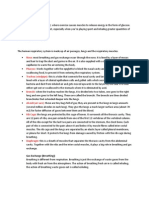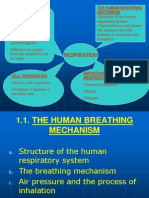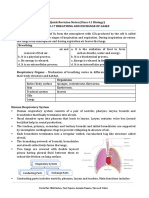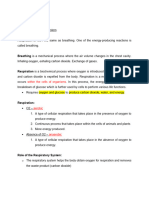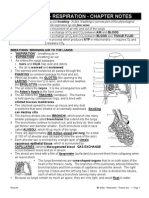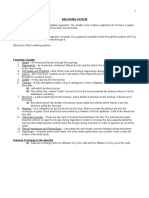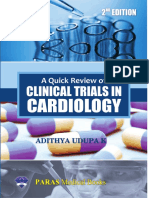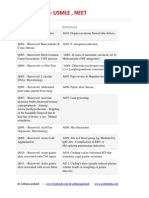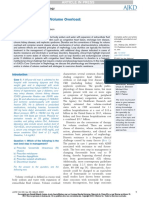0 ratings0% found this document useful (0 votes)
2 viewsRespiration Ppt (1)
Respiration Ppt (1)
Uploaded by
shockwaveryftCopyright:
© All Rights Reserved
Available Formats
Download as PPTX, PDF, TXT or read online from Scribd
Respiration Ppt (1)
Respiration Ppt (1)
Uploaded by
shockwaveryft0 ratings0% found this document useful (0 votes)
2 views36 pagesCopyright
© © All Rights Reserved
Available Formats
PPTX, PDF, TXT or read online from Scribd
Share this document
Did you find this document useful?
Is this content inappropriate?
Copyright:
© All Rights Reserved
Available Formats
Download as PPTX, PDF, TXT or read online from Scribd
Download as pptx, pdf, or txt
0 ratings0% found this document useful (0 votes)
2 views36 pagesRespiration Ppt (1)
Respiration Ppt (1)
Uploaded by
shockwaveryftCopyright:
© All Rights Reserved
Available Formats
Download as PPTX, PDF, TXT or read online from Scribd
Download as pptx, pdf, or txt
You are on page 1of 36
Human Respiration
Includes cellular respiration AND
Gas Exchange
Figure 42.23ab The mammalian respiratory system
Human Respiratory System
Nasal Cavity
Pharynx
Epiglottis
Larynx
Trachea
Bronchi
Bronchioles
Alveoli
Diaphragm
1. Nasal Cavity
Air enters through the nostrils.
The nasal cavity is lined with a ciliated
mucus membrane
This cleans, warms, moisturizes the air
2. Pharynx
Place where the oral and nasal cavities
meet
3. Epiglottis
A flap of tissue which covers the opening of
the trachea during swallowing
4. Larynx
In the top of the trachea
Also called the voice box
It contains vocal chords which allows for
speech
Bigger in males; a deeper voice requires
longer chords, and a bigger housing to keep
them in
5. Trachea
Called the windpipe
Tube in which air travels from the pharynx to
the lungs
Lined with a ciliated mucus membrane
Ringed with cartilage; keeps tube open
during breathing
6. Bronchi
Singular: Bronchus
A branching of the trachea
Lined with a mucus membrane and ringed
with cartilage
There are two of these in the body
7. Bronchioles
A branching of the bronchi
Lined with a mucus membrane
Ends in alveoli
8. Alveoli
Singular: Alveolus
Lungs contain millions of these
Grape-shaped structures
The walls of these are thin and moist
Surrounded by capillaries
1 cell layer thick
Oxygen diffuses from alveoli into capillaries
Carbon dioxide and water diffuse from
capillaries and are exhaled
Alveoli
The alveoli are moist,
thin-walled pockets
which are the site of
gas exchange.
A slightly oily
surfactant prevents the
alveolar walls from
collapsing and sticking
together.
Carbon dioxide transport
Carbon dioxide
can dissolve in
plasma, and
about 70% forms
bicarbonate ions.
Some carbon
dioxide can bind
to hemoglobin
for transport.
Figure 42.23cx1 Alveolar structure of mouse lung
Figure 42.23c Alveoli
Figure 42.23cx2 Alveolar structure of mouse lung
6-8. LUNG
Each bronchus with it’s bronchioles and
alveoli make up a lung
9. Diaphragm
A muscle at the bottom of the chest cavity
It changes the pressure in the chest, causes
breathing
Gas Exchange
Oxygen diffuses from alveolicapillaries
It loosely bonds to hemoglobin, forming
oxyhemoglobin
The oxygen separates from the blood in the
body tissues
Carbon Dioxide and water diffuse from cells
into capillaries
Carbon dioxide is carried in the form of
bicarbonate ions (HCO3-)
In lungs, these wastes diffuse from the
capillaries into alveoli
Breathing
Air moves into and out of lungs
Lungs contain no muscles, but are elastic,
so how do you breathe?
By pressure changes in the chest caused
by:
Changes in the diaphragm and intercostal
muscles: muscles between ribs which
causes the rib cage to get bigger and
smaller
Inhalation
Ribs push up and out
The diaphragm moves down
Makes the chest cavity bigger, which
reduces pressure around the lungs
Air rushes in from the outside to fill the lungs
Exhalation
Ribs move in and down
Diaphragm moves up
These make the chest cavity smaller,
increasing the pressure, air leaves the lungs
Breathing
Breathing Rate
Controlled by medulla in brain
Breathing center in brain senses CO2 levels
in blood
When CO2 is high, impulses are sent to
diaphragm which increases breathing rate
As CO2 levels drop, breathing slows
This is called a negative feedback
mechanism
Disorders of the Respiratory System
Asthma: Allergic reaction where bronchial
tubes narrow and make breathing difficult
Bronchitis: Inflammation of bronchial tube
linings. Swelling causes air passages to
become narrowed and mucus filled.
Coughing and difficulty breathing is a result
Emphysema: Walls of the alveoli break
down. This decreases surface area.
Shortness of breath, difficulty in breathing,
decreased lung capacity is a result
RESPIRATION
The manufacture of ATP from
glucose
Adenosine Triphosphate(ATP)
The only useable form of energy for living
cells
Cellular Respiration
A series of enzyme-controlled reactions in
which the chemical bond energy released
by the breakdown of glucose is transferred
to the bonds of ATP.
This happens in the mitochondria for aerobic
cellular respiration
It happens in the cytoplasm for anaerobic
cellular respiration
ATPADP + P Conversions
When ATP is hydrolyzed, Adenosine
Diphosphate (ADP) and a phosphate (P) is
produced, and ENERGY is released. This
energy is used for the reactions of cell
metabolism
Anaerobic Respiration
Anaerobic: Without Air
Also called fermentation
Lactic Acid Fermentation: In bacteria and
animal muscle cells: Glucose2 lactic
acid + 2ATP
Alcoholic Fermentation:In yeast: Glucose2
Alcohol + 2CO2 + 2ATP
Products of Fermentation
Lactic Acid:
Cheese
Buttermilk
Yogurt
Dill pickles
Alcoholic:
Baking
Wine/ Beer/ Liquor
In the
Mitochondria
You might also like
- EBEEDM Sample Questions FINAL 2018Document66 pagesEBEEDM Sample Questions FINAL 2018Pamela Musabelliu100% (2)
- Atlas of Human Anatomy, Sixth Edition Frank H. Netter, M. D Free Download, Borrow, and Streaming Internet Archive 2Document1 pageAtlas of Human Anatomy, Sixth Edition Frank H. Netter, M. D Free Download, Borrow, and Streaming Internet Archive 2nezastanonik16No ratings yet
- Cowell and Tyler's Diagnostic Cytology and Hematology of The Dog and Cat (Fifth Edition)Document18 pagesCowell and Tyler's Diagnostic Cytology and Hematology of The Dog and Cat (Fifth Edition)Alexandra AndreeaNo ratings yet
- Autopsy Report: Murder of John AgnewDocument9 pagesAutopsy Report: Murder of John AgnewAnonymous X3NoCINo ratings yet
- Respiratory System 8Document32 pagesRespiratory System 8Naanmatha PuspanathanNo ratings yet
- The Respiratory SystemDocument5 pagesThe Respiratory SystemmvslikavNo ratings yet
- Chapter 11 Gas Exchange Notes 1 PDFDocument6 pagesChapter 11 Gas Exchange Notes 1 PDFKai TongNo ratings yet
- Respiratory System OkDocument36 pagesRespiratory System Okakselerasi10No ratings yet
- 05 RespiratoryDocument38 pages05 Respiratoryglenn johnstonNo ratings yet
- 1 Respiratory SystemDocument27 pages1 Respiratory Systemsrujanpm2012No ratings yet
- Breathing and Ventilation With RespirationDocument31 pagesBreathing and Ventilation With Respirationdominique.sterlingNo ratings yet
- Gr.7 biology Ch.5 -with answerDocument51 pagesGr.7 biology Ch.5 -with answerlaith.naqouri1No ratings yet
- Chapter 1: Respiration 1.1 The Human Breathing MechanismDocument4 pagesChapter 1: Respiration 1.1 The Human Breathing MechanismWindy SanNo ratings yet
- Breathing and Gas Exchange: RespirationDocument4 pagesBreathing and Gas Exchange: RespirationAbubakar Siddiq RaminNo ratings yet
- Respiratory SystemDocument55 pagesRespiratory SystemRuwan WijesooriyaNo ratings yet
- Respiratory System ApuntesDocument5 pagesRespiratory System Apuntespaola arangurenNo ratings yet
- Breathing and Gas Exchange PowerpointDocument53 pagesBreathing and Gas Exchange Powerpointapi-263357086100% (1)
- Features of Gas Exchange SurfacesDocument11 pagesFeatures of Gas Exchange SurfacesHumera KhanNo ratings yet
- Form 3 Science Chapter 1Document25 pagesForm 3 Science Chapter 1Mukilan MurugasanNo ratings yet
- Bio Sum 4Document8 pagesBio Sum 4animecuNo ratings yet
- S3 NotesDocument258 pagesS3 NotessemukotekaasanasioNo ratings yet
- Ingles Medico Ii - Clase 3: Vocabulary of Respiratory SystemDocument9 pagesIngles Medico Ii - Clase 3: Vocabulary of Respiratory SystemAgustín Bravo ArreyesNo ratings yet
- BreathingDocument5 pagesBreathingvictory IsaacNo ratings yet
- The Respiratory SystemDocument33 pagesThe Respiratory Systemmshezi841No ratings yet
- 2024 Note On The Respiratory SystemDocument3 pages2024 Note On The Respiratory SystemtrinitytricolchapelNo ratings yet
- Chapter 5 Respiratory System (F.A Portion) - 2Document9 pagesChapter 5 Respiratory System (F.A Portion) - 2ananyachechani34No ratings yet
- 11 Biology Notes Ch17 Breathing and Exchange of GasesDocument4 pages11 Biology Notes Ch17 Breathing and Exchange of GasesParimala devi0% (1)
- RespirationDocument10 pagesRespirationhcxcatelinNo ratings yet
- A Level Gaseous Exchange Continued - 032759Document13 pagesA Level Gaseous Exchange Continued - 032759onyangaismail12No ratings yet
- Gaseous ExchangeDocument5 pagesGaseous Exchangehafsa.r.yasirNo ratings yet
- Respiratory System of Frog: External RespirationDocument3 pagesRespiratory System of Frog: External RespirationShaira CogollodoNo ratings yet
- What Is Respiration?Document8 pagesWhat Is Respiration?Waleed Bin Khalid100% (1)
- BreathingDocument6 pagesBreathingtnkele73No ratings yet
- Respiration Chapter 7 Biology Form 4Document90 pagesRespiration Chapter 7 Biology Form 4edain84No ratings yet
- Respiration Chapter 7 Biology Form 4Document90 pagesRespiration Chapter 7 Biology Form 4Faida Hamid87% (23)
- download_12_309Document11 pagesdownload_12_309sonia shaliniNo ratings yet
- NotesDocument8 pagesNotesbangapawni0705No ratings yet
- Gas Exchange in HumansDocument8 pagesGas Exchange in Humanstawana nyikaNo ratings yet
- 11 Gas ExchangeDocument25 pages11 Gas Exchangecheeze473No ratings yet
- Gas Exchange NewDocument30 pagesGas Exchange Newmariaamkhaann22No ratings yet
- Respiratory SystemDocument3 pagesRespiratory Systemsheri2004zishNo ratings yet
- Bio Form 4 Chap 7Document15 pagesBio Form 4 Chap 7Lim Hong ShengNo ratings yet
- Respiration - Year 8 BiologyDocument5 pagesRespiration - Year 8 Biologyanita.kangggggggNo ratings yet
- Respiratory SystemDocument12 pagesRespiratory SystemM. Farkhan HabibNo ratings yet
- 9 RespirationDocument3 pages9 RespirationKavin ManimaranNo ratings yet
- RESPIRATORY SYSTEM VOCABDocument3 pagesRESPIRATORY SYSTEM VOCABswaggyjulesssNo ratings yet
- The Respiratory SystemDocument4 pagesThe Respiratory Systemefe shanNo ratings yet
- Biology 11 BODY SYSTEMSDocument13 pagesBiology 11 BODY SYSTEMSkatwal09No ratings yet
- respiratory system pdfDocument4 pagesrespiratory system pdfharinithaa07No ratings yet
- Chapter XI - Gas Exchange in HumansDocument1 pageChapter XI - Gas Exchange in Humansghostoast123No ratings yet
- PP21 Gaseous Exchange in Humans 1466512236Document65 pagesPP21 Gaseous Exchange in Humans 1466512236mashamaiteituNo ratings yet
- Zly 106 PDFDocument9 pagesZly 106 PDFOyeleke AbdulmalikNo ratings yet
- Chapter 11 Bio NotesDocument4 pagesChapter 11 Bio NotesArabella ShepherdNo ratings yet
- Biology Notes - Respiratory SystemDocument9 pagesBiology Notes - Respiratory SystemnoorbdeirNo ratings yet
- Respiration NotesDocument4 pagesRespiration NotesJana AldourNo ratings yet
- BreathingDocument5 pagesBreathingKekeletsoNo ratings yet
- Respiratory SystemDocument50 pagesRespiratory SystemJon Joseph LopezNo ratings yet
- CH 3Document3 pagesCH 3sallu bhaiNo ratings yet
- Chapter 1 Human Respiratory System - 1Document20 pagesChapter 1 Human Respiratory System - 1srujanpm2012No ratings yet
- Respiratory System For Grade XIIDocument14 pagesRespiratory System For Grade XIIssah4155No ratings yet
- 2 Gas Exchange SL 2Document38 pages2 Gas Exchange SL 2mariannamattuschNo ratings yet
- How Do Humans Breathe? Science Book Age 8 | Children's Biology BooksFrom EverandHow Do Humans Breathe? Science Book Age 8 | Children's Biology BooksNo ratings yet
- Lung Diseases, A Simple Guide To The Condition, Diagnosis, Treatment And Related ConditionsFrom EverandLung Diseases, A Simple Guide To The Condition, Diagnosis, Treatment And Related ConditionsNo ratings yet
- Previous Question Paper 1 CardiologyDocument5 pagesPrevious Question Paper 1 CardiologyDeepthi DNo ratings yet
- Final TobaccoDocument51 pagesFinal TobaccoTwinkle Keswani100% (1)
- Antithrombotic Therapy For VTE Disease - Second Update of The CHEST Guideline and Expert Panel Report - Executive Summary 2021Document28 pagesAntithrombotic Therapy For VTE Disease - Second Update of The CHEST Guideline and Expert Panel Report - Executive Summary 2021andreloliveira88No ratings yet
- OrthopedicDocument17 pagesOrthopedicTadele B EltiroNo ratings yet
- Phyiological Effects of AsanasDocument21 pagesPhyiological Effects of AsanasSwapna JkNo ratings yet
- Anatomy of The Lymphatic SystemDocument86 pagesAnatomy of The Lymphatic Systemahmed elsebaeyNo ratings yet
- Chest Wall Deformities by Atrey GaonkarDocument48 pagesChest Wall Deformities by Atrey GaonkaratreygaonkarNo ratings yet
- Modul 2 Urinary System KeyDocument16 pagesModul 2 Urinary System KeyMr FuckNo ratings yet
- Anatomy and Physiology of MusculosceletalDocument119 pagesAnatomy and Physiology of MusculosceletalIrgi PutraNo ratings yet
- AnticoagulatsDocument52 pagesAnticoagulatsanaya khan StudentNo ratings yet
- Cerebro Vascular Accident (CVA) - A Medical Case Study: Sophia GDocument13 pagesCerebro Vascular Accident (CVA) - A Medical Case Study: Sophia GAkash HalsanaNo ratings yet
- Good BooksDocument16 pagesGood BooksFbihansip bancel100% (1)
- BuzzwordsDocument35 pagesBuzzwordstesta21100% (1)
- NURS1108 Lecture 11 - Nervous SystemDocument49 pagesNURS1108 Lecture 11 - Nervous SystemJacia’s SpaceshipNo ratings yet
- RT BOARD Table of SpecificationDocument30 pagesRT BOARD Table of SpecificationRussel Jade PanesNo ratings yet
- Anatomy of NeckDocument133 pagesAnatomy of NeckROBUSTNo ratings yet
- Exam Ticket Number Wise CaseDocument37 pagesExam Ticket Number Wise CaseVikrantNo ratings yet
- Diuretics in States of Volume Overload Core Curriculum 2022Document13 pagesDiuretics in States of Volume Overload Core Curriculum 2022Fercho MedNo ratings yet
- Fenichel's Clinical Pediatric Neurology: A Signs and Symptoms Approach (Expert Consult - Online and Print)Document23 pagesFenichel's Clinical Pediatric Neurology: A Signs and Symptoms Approach (Expert Consult - Online and Print)janelaoforie100% (13)
- 2020-Venous Ultrasound-2ndDocument255 pages2020-Venous Ultrasound-2ndMonkeyNo ratings yet
- Ehra Position Paper: Europace (2018) 20, 1719-1720 Doi:10.1093/europace/eux380Document35 pagesEhra Position Paper: Europace (2018) 20, 1719-1720 Doi:10.1093/europace/eux380Karen OezauNo ratings yet
- Multimodality Imaging in Differentiating Constrictive Pericarditis From Restrictive Cardiomyopathy - A Comprehensive Overview For Clinicians and ImagersDocument12 pagesMultimodality Imaging in Differentiating Constrictive Pericarditis From Restrictive Cardiomyopathy - A Comprehensive Overview For Clinicians and ImagersLevi PNo ratings yet
- Robin L. Dole PT DPT EdD PCS, Ross Chafetz PT DPT MPH - Peds Rehab Notes - Evaluation and Intervention Pocket Guide (Davis's Notes Book) - F.A. Davis Company (2010)Document295 pagesRobin L. Dole PT DPT EdD PCS, Ross Chafetz PT DPT MPH - Peds Rehab Notes - Evaluation and Intervention Pocket Guide (Davis's Notes Book) - F.A. Davis Company (2010)hanakhraiseNo ratings yet
- Methylene Blue For Refractory Shock in Pediatric PatientsDocument16 pagesMethylene Blue For Refractory Shock in Pediatric Patientsandi rahmatNo ratings yet
- TAS Feb 2021 Recall NEWDocument25 pagesTAS Feb 2021 Recall NEWdrmurad321No ratings yet
- MMCSBY New Package and ProcedureDocument684 pagesMMCSBY New Package and Procedurekppoonia786No ratings yet





